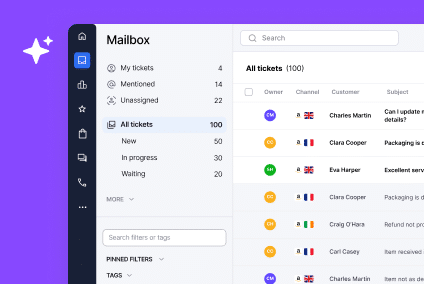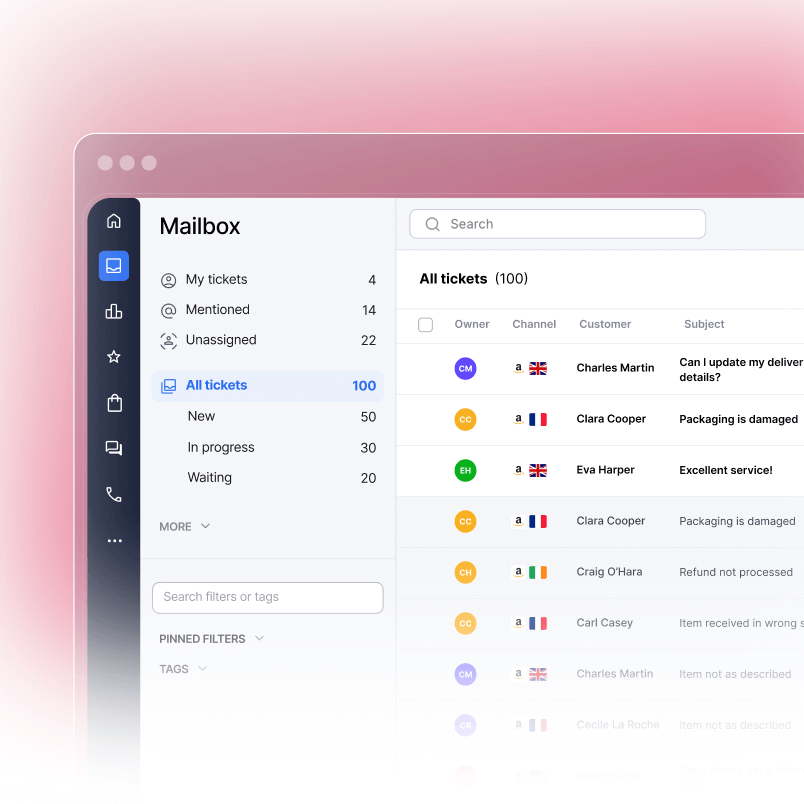Getting approved to sell in restricted Amazon categories feels like unlocking a new level in your business. But approval requires more than just the right paperwork. Amazon evaluates your entire seller account, including how you handle customer interactions and resolve issues. Your customer service approach directly influences whether you get approved or rejected.
This guide walks you through the ungating process, explains why account health matters, and shows you exactly how professional support practices can improve your approval odds.
What Is Amazon Ungating?
Amazon gates certain product categories and brands to protect customers and maintain marketplace quality. Gating means you need approval before you can list products in that category. Restricted categories include Beauty, Grocery, Supplements, Fine Jewelry, and Automotive Parts.
Some brands also use ASIN-level gating. This means Amazon restricts specific products (ASINs), not entire categories. For example, a seller might be gated on Nike shoes specifically but not all footwear.
When you apply for ungating, you are asking Amazon to remove restrictions on your account so you can sell in that category or specific ASIN. Approval depends on several factors: your sales history, account metrics, documentation, and how well you manage customer relationships.
How the Amazon Ungating Process Works
Step 1: Identify Your Gated Categories
Log into Seller Central and check your account. Gated categories show a „Closed“ status next to the category name. Amazon lists restrictions on your dashboard.
Step 2: Gather Required Documentation
Amazon requires proof that you source products legitimately. You need invoices from authorized distributors or manufacturers. These invoices must show your business name, address, and product details. Generic invoices or invoices from non-authorized sellers often get rejected.
Step 3: Submit Your Application
Go to the „Gating“ section in Seller Central and submit your request. You can include up to 3 invoices per application. Upload clear scans or photos showing supplier information, invoice dates, quantities, and prices. Blurry or incomplete invoices hurt your chances.
Step 4: Amazon Reviews Your Account
Amazon evaluates your entire seller profile during this step. They check your customer service metrics, return rates, and feedback scores. They review how you handle customer disputes and whether you respond promptly to support inquiries. This phase typically takes 1 to 4 weeks.
Step 5: Approval or Reapply
You receive a response via email. If approved, you can list in that category immediately. If rejected, Amazon provides feedback explaining why. Most rejections cite documentation issues or account health concerns. You can reapply with corrected documentation or after improving your metrics.
Why Account Health and Customer Service Matter
Amazon looks beyond invoices when evaluating ungating requests. Your account health tells a story about how you operate your business.
A high Order Defect Rate (ODR) raises red flags. ODR measures customer complaints, chargebacks, and returns together. According to Feedvisor’s research on seller performance measurements, Amazon targets an Order Defect Rate under 1%, and sellers who exceed this threshold face account warnings or suspension. In 2021, Amazon shipped over 5 billion items with an average ODR of just 0.30%, demonstrating that sellers with strong support practices maintain significantly lower defect rates. If your ODR exceeds 1%, Amazon sees a seller with operational problems. That perception carries into ungating decisions.
Slow response times to customer messages signal that you lack control over your operations. When a customer contacts you through Amazon Messaging, your speed in responding matters. According to Tidio’s analysis of customer service expectations, 89% of consumers say a quick response to an initial inquiry influences their purchase decision. Sellers who reply within 24 hours show professionalism. Sellers who take days create doubt. Research from SuperOffice on response time metrics shows the average customer service response time in eCommerce is between 15 and 17 hours, but Amazon sellers aiming for ungating should respond much faster to stand out.
Your feedback score reflects overall customer satisfaction. Low ratings suggest quality or service issues. Amazon worries that if you struggle with current product categories, adding new restricted categories will only worsen your metrics. According to Salesforce’s customer experience research, 93% of customers are likely to shop again with a brand following a positive customer service experience, which means your feedback history directly predicts future performance. Companies that prioritize customer experience see measurable improvements in both account health and sales performance.
Return and refund policies matter too. If you have no clear return policy or you consistently fight customer returns, Amazon sees a seller unwilling to stand behind their products. This raises questions about whether you will honor return policies in restricted categories. Review Amazon’s updated returns policy to understand the importance of clear, fair refund structures that protect both you and your customers.
Clean Seller Central records show you handle issues responsibly. This means low complaint rates, prompt communication, and fair dispute resolutions. When your account reflects these qualities, ungating approval becomes far more likely.
Documents Amazon Needs to See
Invoices From Authorized Suppliers
You must provide invoices from authorized distributors, manufacturers, or wholesalers. Amazon accepts invoices from these sources:
- Brand-authorized wholesalers
- Official distributors
- Manufacturer direct sales
- Licensed retailers with resale authority
Amazon does not accept invoices from resellers, marketplace purchases, or non-authorized suppliers. If your invoice comes from another seller, it will likely be rejected.
Business Contact Information
Your business name, address, and phone number must match your Seller Central account exactly. Mismatches signal account irregularities or fraud concerns. Double-check every detail before submitting.
Return and Refund Policy Documentation
Include a copy of your return policy as it appears on your storefront or brand website. This shows Amazon that you commit to professional standards in the restricted category.
Customer Support Contact Records
Include documentation showing how you handle customer service. This might include screenshots of recent support communications, response time logs, or summaries of how you resolved customer issues. Many sellers provide monthly summary reports showing average response times and issue resolution rates. Documentation of strong support metrics significantly strengthens your application.
Strengthening Your Application Through Better Support
Respond to Amazon Quickly
When Amazon requests information or documentation, respond within 24 hours. Speed demonstrates competence and urgency. Delayed responses suggest disorganization.
Maintain Detailed Support Records
Document every customer interaction. Track your response times, issue types, and resolutions. When you have detailed records, you can prove that you handle support professionally.
Use software that tracks support metrics automatically. Tools that integrate with Amazon Messaging capture response times, first-contact resolution rates, and customer satisfaction. Reviewing these metrics shows Amazon you take customer service seriously. According to Business Dasher’s research on customer service metrics, companies that track response time data actively see 21% faster problem resolution compared to those who don’t monitor performance metrics. Learn more about time-saving tips for customer service automation to streamline your processes before applying.
Polish Your Brand Presentation
Your brand voice matters. Professional, consistent communication across all platforms builds credibility. If Amazon sees mismatched tone or quality in your customer messages, they question your attention to detail.
Use templated responses for common issues, but personalize them. Customers appreciate when responses sound human, not robotic. Amazon looks for sellers who balance efficiency with care.
Avoid Generic Support
Automated helpdesks that sound impersonal hurt your application perception. Amazon wants sellers who own their customer relationships. When you personally engage with customers or assign dedicated account managers, it shows control and accountability.
Lower Your Order Defect Rate
Focus on fulfillment speed, accurate product descriptions, and quality control. Lower your return rates by matching customer expectations closely. When customers feel satisfied, they leave positive feedback and create fewer complaints. Improving your ODR requires attention to shipping times, product quality, and responsive issue resolution. Many sellers see measurable improvements within 30 to 60 days of implementing these practices.
Build Positive Feedback
Encourage satisfied customers to leave feedback. Use professional feedback request emails that comply with Amazon’s policies. When your feedback score climbs above 98%, you show Amazon a seller who consistently delivers quality.
Tools That Help Sellers Get Ungated
eDesk integrates with Amazon Seller Central to sync order and case data. You can manage customer messages, track response times, and document support interactions all in one dashboard. This makes it easy to pull reports showing your account health metrics when applying for ungating. Explore our guide on Amazon customer experience best practices to understand how professional support tools strengthen your ungating application and improve overall account health.
ChannelReply connects your customer service across channels while maintaining Amazon messaging functionality. Their case resolution tracking helps you monitor support metrics that Amazon reviews.
Many sellers work with specialized ungating services that prepare documentation, verify invoices, and submit applications on their behalf. Services like Keyturn or Pro Seller have experience with category-specific ungating requirements. They cost money but increase approval odds if your documentation is weak.
Common Reasons Ungating Requests Get Denied
Unverified Supplier Invoices
Invoices from non-authorized sources top the rejection list. If Amazon cannot verify the supplier as legitimate, they reject your application. Always check that your supplier is authorized to sell the brand.
Mismatched Business Information
If your business name, address, or phone number differs between your invoice and Seller Central, Amazon flags it as suspicious. This alone causes rejection.
Poor Account Metrics
High Order Defect Rates, low feedback scores, or excessive customer complaints signal account health problems. Amazon will not approve ungating for sellers with weak metrics, no matter what documentation you submit.
Incomplete or Blurry Documentation
Invoices must be clear and complete. Missing information like dates, supplier names, or product details makes processing impossible.
Too Few or Too Old Invoices
Amazon expects current invoices showing recent purchase history. Single invoices from months ago look weak. Submit multiple recent invoices to show ongoing legitimate sourcing.
Previous Violations
If your account has prior policy violations, brand complaints, or suspension history, ungating approval becomes much harder. Amazon sees risk in allowing gated categories.
Getting Ungated, Step by Step
The most successful ungating applications share these qualities: clean account history, professional support metrics, and verified documentation. Here is what to do:
First, pull your account metrics from Seller Central. Write down your Order Defect Rate, feedback score, cancellation rate, and return rate. If any metric is weak, spend 30 to 60 days improving it before applying.
Second, gather recent invoices from authorized suppliers. Get at least 2 to 3 invoices showing the exact products you want to sell. Make sure invoices are recent (within the last 6 months). Ensure all business information matches your Seller Central account exactly.
Third, document your customer service practices. Screenshot your response times, customer feedback, and support resolution records. If you use software like eDesk, generate reports showing your support metrics.
Fourth, write a brief cover letter explaining your experience with the product category. Mention your sourcing relationships, your commitment to quality, and your clean support record. Keep it professional and honest.
Fifth, submit your application through Seller Central. Include all invoices, business information, and support documentation. Submit when you know your metrics are strong.
Sixth, monitor your email daily. Amazon might request additional information. Respond within 24 hours with whatever they ask for.
Seventh, be patient. Decisions typically come within 2 to 4 weeks. If rejected, read the feedback carefully and reapply with corrections.
Final Summary
Amazon ungating approval hinges on two things: valid documentation and account credibility. Your customer service practices directly build that credibility. Sellers who respond quickly to customers, maintain low defect rates, and manage professional support interactions receive more favorable reviews during the ungating process.
Start today by auditing your account metrics and gathering your invoices. Improve weak areas while you prepare documentation. Submit when your numbers shine.
Looking to strengthen your support operations before applying? eDesk helps sellers track support metrics, manage customer messages, and maintain account health across all Amazon channels. Discover 30 essential customer service stats for eCommerce sellers to understand the metrics that matter most. Set up a demo to see how integrated support tools simplify ungating preparation.
FAQs
What is ungating on Amazon?
Ungating means receiving approval to sell in a restricted product category or specific ASIN. Gated categories like Beauty, Supplements, and Grocery require seller approval before you can list products.
Does customer service history affect my ungating chances?
Yes. Amazon reviews your Order Defect Rate, response times, feedback scores, and customer complaint history. Sellers with strong support metrics receive favorable consideration during the ungating review process.
What documents do I need to get ungated?
You need invoices from authorized suppliers showing you source products legitimately. You also need matching business contact information and documentation of your support practices. Return policy documentation strengthens applications.
How long does the ungating process take?
Most decisions arrive within 1 to 4 weeks. Simple approvals might come faster. Complex cases or requests for additional information may take longer.
Can I reapply after rejection?
Yes. Amazon explains why they rejected your request. Address those specific concerns, improve your account metrics if needed, and reapply. Most sellers succeed on a second application.
What is Order Defect Rate and why does it matter?
Order Defect Rate (ODR) combines customer complaints, chargebacks, and returns into one metric. Amazon prefers ODR below 1%. High ODR suggests operational problems and reduces ungating approval odds.
Which Amazon categories are most commonly gated?
Beauty, Grocery, Supplements, Fine Jewelry, Automotive Parts, and Topicals are frequently gated. Some sub-categories within Sports, Toys, and Personal Care are also restricted. Check your Seller Central account for your specific gated categories.
Should I use an ungating service?
Ungating services help if your documentation is weak or you lack sourcing relationships. Services like Keyturn verify invoices and prepare strong applications. Many sellers succeed without services if they gather solid documentation themselves.




